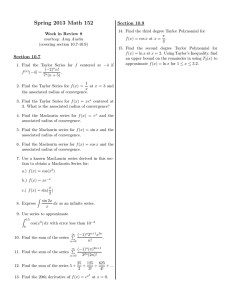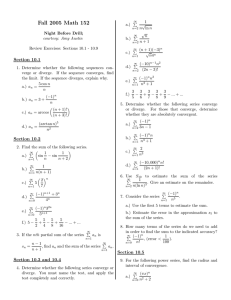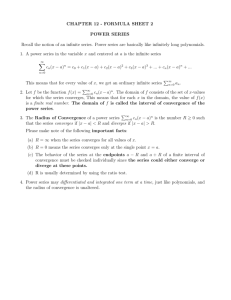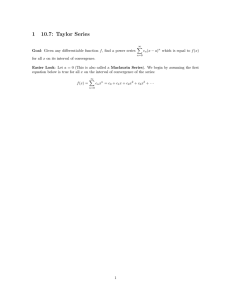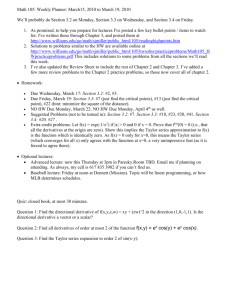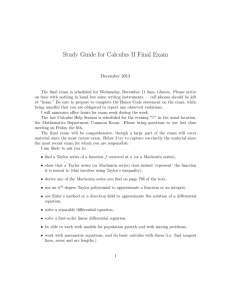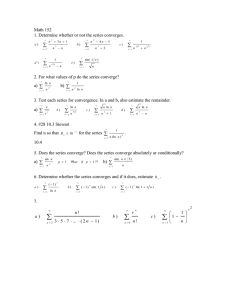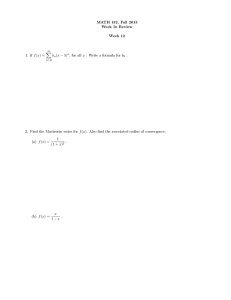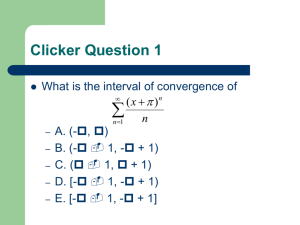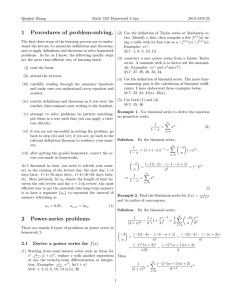Lesson9.10 Taylor and Maclaurin Series
advertisement
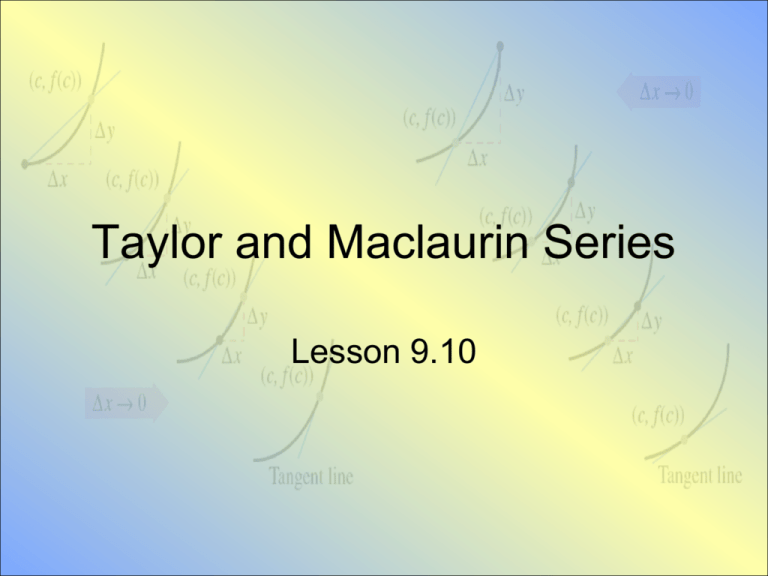
Taylor and Maclaurin Series Lesson 9.10 Convergent Power Series Form • Consider representing f(x) by a power series • For all x in open interval I • Containing c • Then f ( x) an x c f ( n ) (c ) an n! f "(c) f ( x) f (c) f '(c)( x c) ( x c) 2 ... 2! n Taylor Series • If a function f(x) has derivatives of all orders at x = c, then the series n 0 f ( n ) (c) f "(c) n ( x c) f (c) f '(c)( x c) ( x c)2 ... n! 2! is called the Taylor series for f(x) at c. • If c = 0, the series is the Maclaurin series for f . Taylor Series • This is an extension of the Taylor polynomials from section 9.7 • We said for f(x) = sin x, Taylor Polynomial of degree 7 2 3 x x sin x M 7 ( x) 0 x 0 2! 3! x 4 x5 x6 x7 0 0 4! 5! 6! 7! Guidelines for Finding Taylor Series 1. Differentiate f(x) several times f (c), f "(c), f '''(c),..., f • (c) Evaluate each derivative at c 2. Use the sequence to form the Taylor coefficients • (n) f ( n ) (c ) an n! Determine the interval of convergence 3. Within this interval of convergence, determine whether or not the series converges to f(x) Series for Composite Function • What about when f(x) = cos(x2)? • Note the series for cos x x2 x4 x6 cos x 1 ... 2! 4! 6! • Now substitute x2 in for the x's 4 8 12 x x x cos x 1 ... 2! 4! 6! 2 Binomial Series • Consider the function f ( x) 1 x k • This produces the binomial series • We seek a Maclaurin series for this function • Generate the successive derivatives (n) f (0) ? • Determine • Now create the series using the pattern f "(c) 2 f ( x) f (0) f '(0) x x ... 2! Binomial Series • 2 n k ( k 1) x k ( k 1) ... ( k n 1) x f ( x) (1 x) k 1 k ... 2 n! • We note that an1 lim 1 n a n • Thus Ratio Test tells us radius of convergence R=1 • Series converges to some function in interval -1 < x < 1 Combining Power Series • Consider f ( x) e x arctan x x 2 x3 e 1 x ... 2! 3! and x • We know x3 x5 arctan x x ... 3 5 • So we could multiply and collect like terms 1 3 e arctan x x x x ... 6 x 2 Assignment • Lesson 9.10 • Page 685 • 1 – 29 odd
